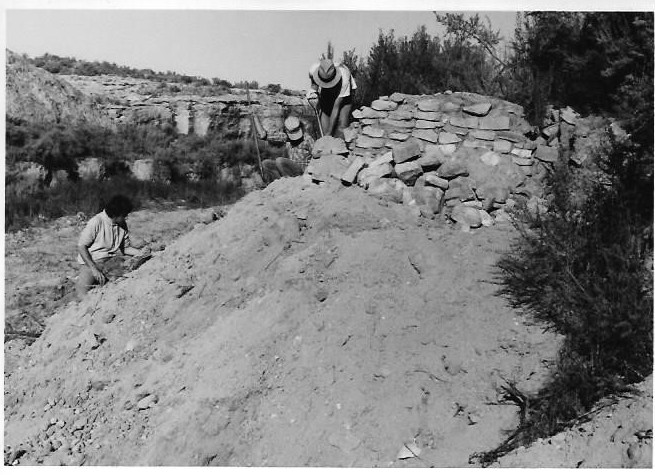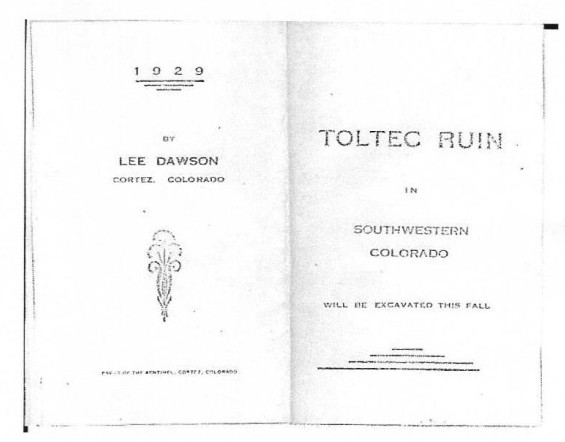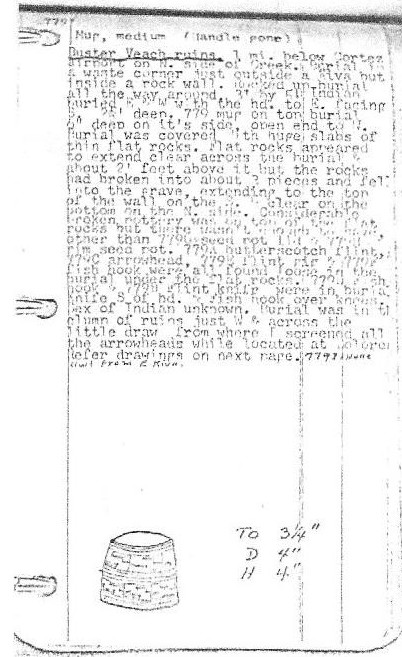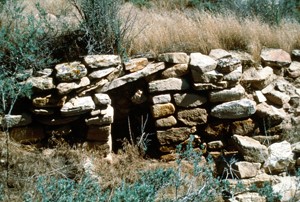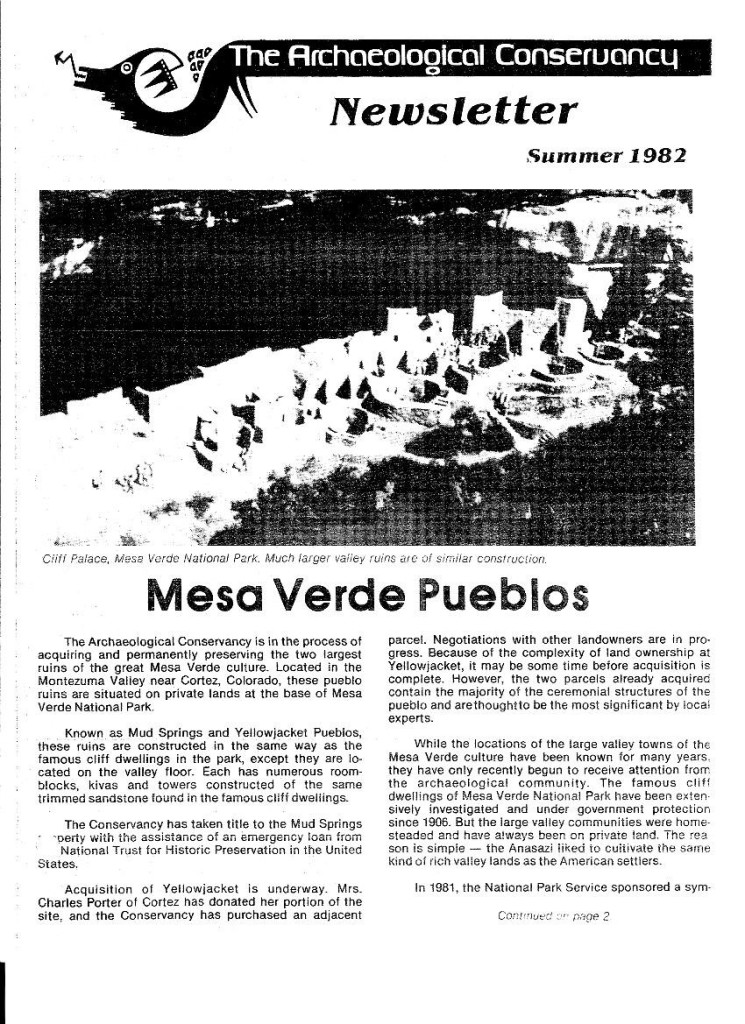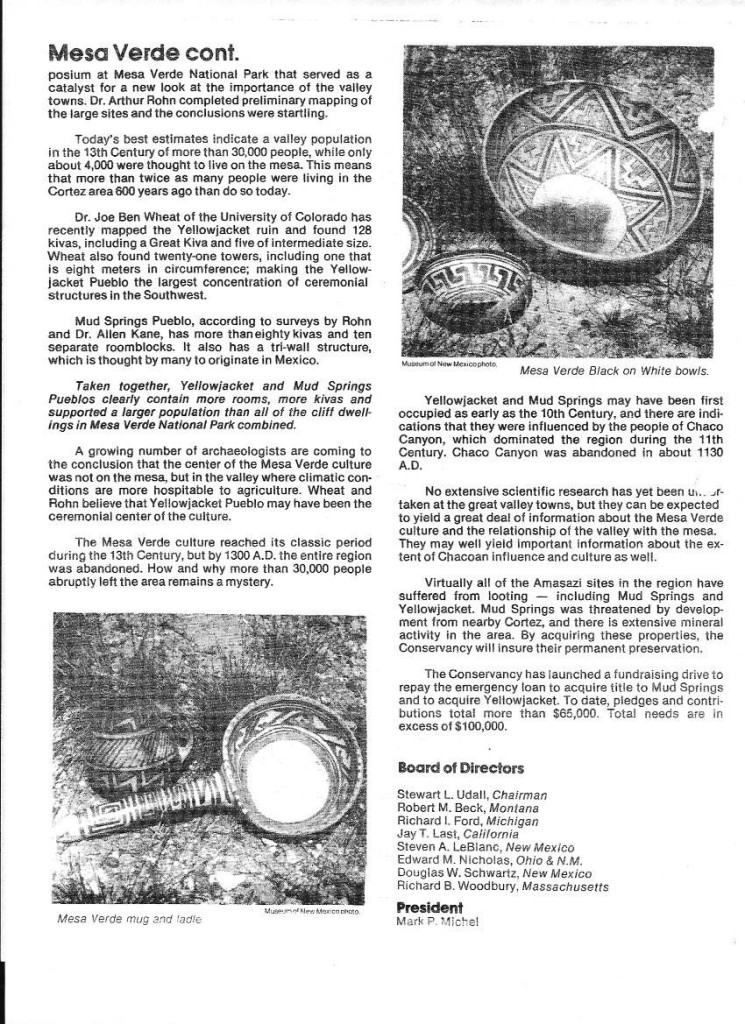Mud Springs Pueblo, located outside of Cortez, Colorado has had a checkered past. It has been bought, sold, exploited, looted and finally now preserved in perpetuity by the Conservancy. It is one of the large Mesa Verde towns, built and occupied in the Montezuma Valley between about A.D. 900-1300. The 60-acre ruin boasts about 1,000 surface rooms and containing about 16 room blocks. The site has a reservoir and a unique tri-wall structure, making it is one of the most impressive sites in the region.
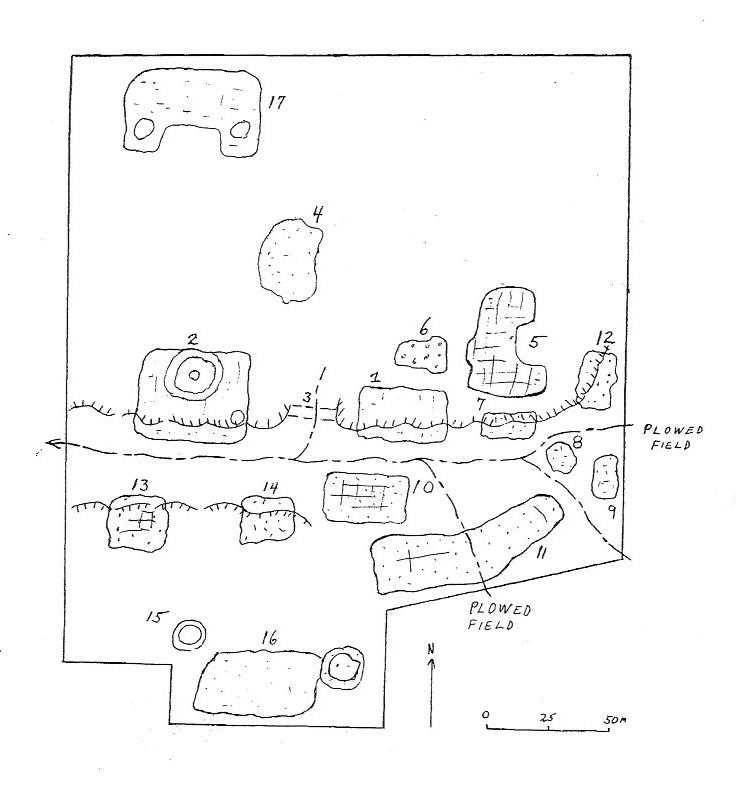
One of the first references to Mud Springs can be found in the 1879 US Geological Survey’s 10th annual report, when W.H. Holmes stopped at Mud Springs to sketch the tri- wall structure.
In 1929, a property owner printed a small booklet announcing that the “Toltec Ruin” would be excavated that fall. A copy of the Toltec Ruin brochure declares the valley’s inhabitants to be “Cro Mangen” cave dwellers who migrated up from South America into the four corners region. There was a time in the 1930’s and 1940’s when you could dig all day at Mud Springs for $10 and keep anything you found.
In the 1960’s a page from a prolific looter’s notebook, below, recounts an attack on a Mud Springs burial in what was called the “Buster Veach Ruins”. His notes are illustrated with a sketch of a mug he found in the burial.
Much later in 1982, the nascent Archaeological Conservancy began negotiating to purchase Mud Springs as our first preserve in Colorado. At that time, the couple who owned the ruin were embroiled in a difficult divorce case. The courts had ordered the liquidation of all their property, including the site. In a last ditch effort to extract Mud Spring’s riches, one of the owners decided to do a little excavating with a bulldozer. A photo from the investigation that followed is below.
Because of the court order to liquidate assets, the purchase price had to be paid in cash, which the Conservancy didn’t have at the time. With the help of an emergency loan from the National Trust for Historic Preservation, we were able to buy the preserve. At that time, 1982, Mud Springs was listed in the National Register of Historic Places. The entry read:
National Register
10/29/1982
Mud Springs Pueblo:
One of the largest prehistoric communities in Colorado, Mud Springs consists of at least 16 major architectural features including large roomblocks, towers, and tri-walled structures. This is one of several Montezuma valley sites that share broad similarities but also display differences in terms of layout, house types, public architecture, and perhaps time spans. This site was badly looted prior to its rescue in the 1980s. (1986 photograph.)
In 1986 we embarked on a large-scale backfilling project to cover the exposed walls and damaged features of the site, with the assistance of volunteers. Today the site remains preserved and protected.
Despite centuries of plunder, neglect and destruction, archaeologists estimate that over 80% of the deposits at Mud Springs remain intact and undisturbed. It does indeed take a lot to ruin a Ruin!
Below a clickable link PDF of the full ‘Toltec Ruins’ Mud Springs Pueblo Brochure 1929 by Lee Dawson, followed by a scan of the original description of the saved site in the 1982 Archaeological Conservancy Newsletter .

